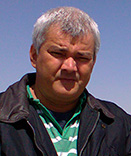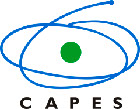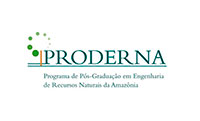WREN 2016
The Workshop on Renewable Energy Sources and Nanotechnology
SEMINARS

Seminar 10: Title: Molecular dynamics of H2 storage in carbon nanotubes under external electric field effects: a sensor proposal.
Speaker: Antonio Maia
Summary: We present an analysis on molecular dynamics between H2 molecule interacting with one carbon nanotube section at low initial-temperature of simulation, corresponding to 10-3K, and under constant electric field effects, in order to verify the performance of the carbon nanotube like a H2 sensor, and consequently, indicating its use as an effective internal coating in storage tanks of hydrogen gas. During simulations, the H2 was relaxed for 40 ps inside and outside of carbon nanotube, describing each
possible arrangement for the capture of H2, and electric field was applied over the system, longitudinally to the carbon nanotube length, promoting the rise of an evanescent field, able to trap H2, which orbited the carbon nanotube. Simulations for electric fields intensities in a range of 10-8 au up to 10-6 au were performed, and mean orbit radius are estimated, as well as, some physical quantities of the system. The quantities calculated were: kinetic energy, potential energy, total energy and temperature in situ, among molar entropy variation. Our results indicates that a combination of electric field and van der Walls interactions derivatives of carbon nanotube is enough to create an evanescent field with attractive potential, showing it system as a good H2 sensor.

Seminar 11: Photosensitized hydrogen generation and degradation of pollutants on TiO2 nanostructures
Speaker: Daniel E. Weibel
Sumary: TiO2-based materials are widely used in photocatalysis due to their high reactivity, physical and chemical stability, low toxicity and cost. However, TiO2 is active under UV active light limiting their wide spread use under solar irradiation. Several methods have been developed to synthesize nanostructured crystalline TiO2, including sol–gel technique, hydrothermal process, anodization, and so on. Besides these established synthesis methods, new process, such as microwave assisted chemistry (MWAC) or electrospinning has
been shown to be superior and a green methodology. Photosensitization of TiO2 with high specific surface areas would allow taking advantage of the high catalytic activity of the TiO2 and harvest sun light with production of hydrogen and simultaneous degradation of pollutants.
Photocatalytic performance of three types of TiO2 photocatalysts will be presented according to the preparation method: i) MWAC (nanotubes, NTs); ii) anodization (NTs) and iii) electrospinning (nanofibers, NFs). TiO2 nanostructures were photosensitized by impregnation with Ag nanoparticles (NPs) prepared by MWAC or Pt/Au NPs by DC-magnetron sputtering deposition method. Prototype dyes were used to test the photodegradation activity of the prepared photocatalysts. Hydrogen generation was measured by gas chromatography. The prepared TiO2 photocatalysts were characterized by TEM, SEM (EDX), XRD, XPS, BET and UV-diffuse.
TiO2 NTs (i) with lengths between 50-500 nm, internal diameters of about 3.7 nm and wall thickness of 2.1-5.5 nm were impregnated with Ag NPs of sizes of 1.8 nm by simple immersion process. TiO2 NTs (ii) (1.5 mm length, 60 nm diameter and ~20 nm wall thickness) were impregnated with ultrasmall Pt [1] or Au NPs [2]. TiO2 NFs (iii) of 250-1000 nm in diameter were prepared using electrospinning by dispersions of TiO2 NPs (AEROXIDE®TiO2-P25) on a synthetic biodegradable aliphatic-aromatic copolyesterpoly(butylenesadipate-co-terephthalate) (PBAT) polymer. After thermal treatment the TiO2 NFs dispersion was maintained.
The obtained results are summarized according to the preparation method:
i) Under UV-vis irradiation the TiO2 NTs/Ag NPs photocatalyst degraded the Methyl Orange dye to complete decolouration of the solution in 3 h. Additionally, irradiation of this system with λ ≥ 400 nm shows an efficient photodegradation process without direct photochemical activation of TiO2.
ii) Highly toxic and mutagenic formaldehyde water solutions were degraded on supported TiO2 NTs loaded with noble NPs. Photocatalysis of formaldehyde solutions led to mineralization of the pollutant with simultaneous production of hydrogen. A high selectivity in hydrogen photocatalytic evolution with respect to CO2 and CO was obtained by choosing the right amount of Pt NPs loaded. In addition, hydrogen was also produced using only visible light irradiation (λ ≥ 400 or 450 nm) when Au NPs were loaded on the TiO2 NTs [2].
iii) Preliminary results using TiO2 NFs showed promising hydrogen generation rates. These experiments are under way. Impregnation of TiO2 NFs with Ag NPs prepared by MWAC will be a next step.
The prepared photocatalysts have the potential to be used for efficient treatment of effluents using UV or solar light. Depending on the NPs used, Au or Ag, solar light harvesting is possible.

Seminar 12: Thermodynamic DFT Analysis of Natural Gas.
Speaker: Abel Ferreira Gomes Neto
Summary: We present a theoretical study using density functional theory as a methodology for predicting thermodynamics properties of natural gas using the B3LYP functional and CBS-QB3 basis level methods. The calculations were performed for each major component of seven kinds of natural gases and to their respective air - natural gas mixtures at thermal equilibrium between room and their ignition temperatures. The following thermodynamics variations were obtained: internal energy, enthalpy, Gibbs free energy and
entropy. Also, we estimated, for a large temperature range, the important parameter specific heat ratio of each natural gas, which allowed us to compare the results with those of empirical functions of these parameters, showing a great agreement between them. In addition, relevant information on the mechanical resistance of natural gases was also investigated. Moreover, standards thermodynamics properties for combustion of natural gas are presented. Thus, we show that density functional theory can be used for thermodynamic characterization of natural gas in equilibrium.





.png)

Wren 2016. © All Right Reserved


